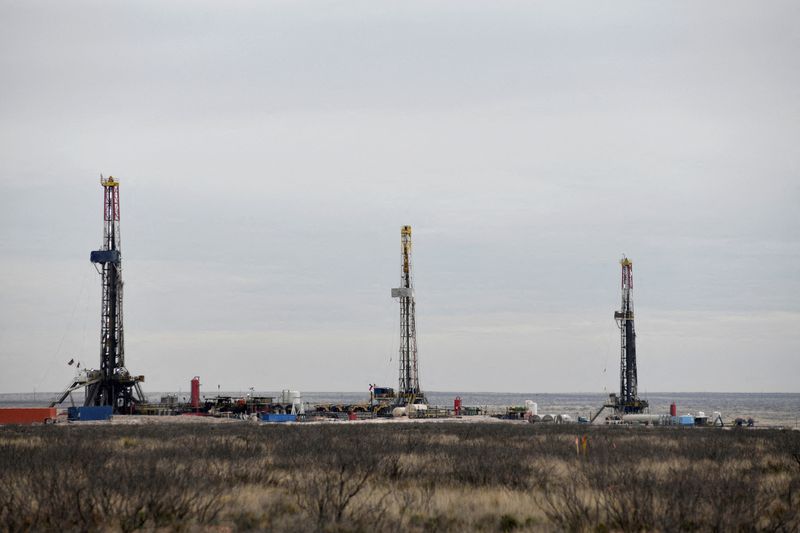
By Shariq Khan
NEW YORK (Reuters) – U.S. oil and gas producers’ appetite for dealmaking is closing in on last year’s record, with rising interest in smaller oilfields offsetting slower activity in the top oil-producing Permian basin, analysts at consultancy firm Rystad said on Wednesday.
Nearly $100 billion has been spent by U.S. producers on mergers and acquisitions (M&A) so far this year, and another $46 billion in assets are currently for sale, according to a Rystad analysis through late August.
A record $155 billion worth of production and exploration focused deals were signed in 2023, according to Rystad’s tally.
Consolidation in the industry reached a fever pitch last year as top oil producers unveiled mega-deals to boost both their output and their backlog of drilling locations. For private owners, it has presented a rare window to exit investments profitably.
“Private equity-backed oil producers are likely to continue selling off assets to capitalize on public companies’ appetite for inventory and secure premium valuations as competition among potential buyers increases,” Raina said.
While last year’s dealmaking rush focused almost exclusively on the Permian basin in Texas and New Mexico, intense competition for acreage in the top U.S. oilfield has sent opportunistic buyers to look elsewhere.
SM Energy (NYSE:SM), which is extending its footprint in the Uinta basin in Utah by acquiring XCL Resources for $2 billion, said good deals have become harder to find in the Permian.
“We would love to add that kind of asset in the Permian, but getting something of that size anywhere near that price is really hard right now,” SM Energy Chief Financial Officer Wade Pursell said at a conference on Tuesday.

Deals focused on the Permian were just 46% of the first half total this year, versus 92% in the second-half last year, according to Rystad’s analysis.
Deals in the Bakken basin of North Dakota grew to 12% in the first-half this year, from virtually none in the second half last year. The Marcellus basin in Pennsylvania made up 14% of the deals in the first half this year, while the Eagle Ford (NYSE:F) basin in Southeast Texas represented 13%, according to Rystad data.
This post is originally published on INVESTING.


